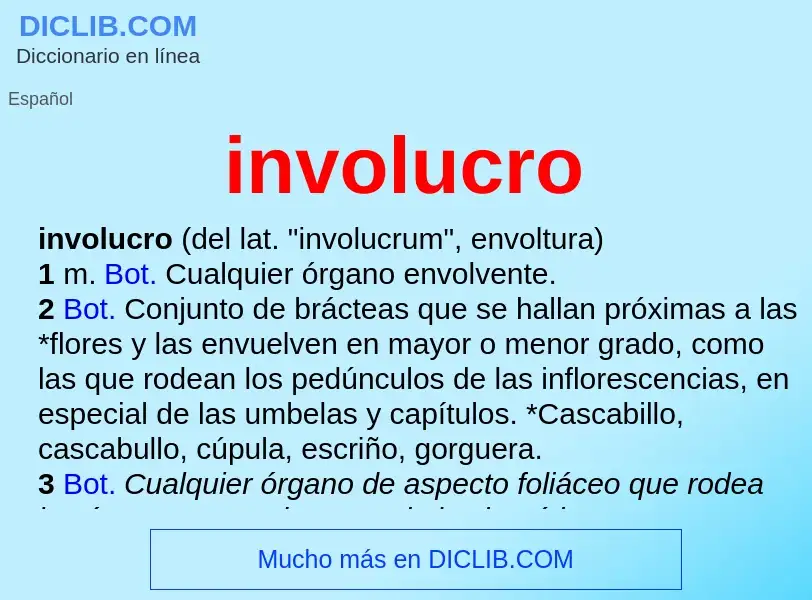Enter a word or phrase in any language 👆
Language:
Translation and analysis of words by artificial intelligence
On this page you can get a detailed analysis of a word or phrase, produced by the best artificial intelligence technology to date:
- how the word is used
- frequency of use
- it is used more often in oral or written speech
- word translation options
- usage examples (several phrases with translation)
- etymology
What (who) is involucro - definition
Involucelo
involucro
involucro (del lat. "involucrum", envoltura)
1 m. Bot. Cualquier órgano envolvente.
2 Bot. Conjunto de brácteas que se hallan próximas a las *flores y las envuelven en mayor o menor grado, como las que rodean los pedúnculos de las inflorescencias, en especial de las umbelas y capítulos. *Cascabillo, cascabullo, cúpula, escriño, gorguera.
3 Bot. Cualquier órgano de aspecto foliáceo que rodea los órganos reproductores de las hepáticas y musgos.
involucro
sust. masc.
Botánica. Verticilo de brácteas situado en la base de una flor o de una inflorescencia.
Wikipedia
Involucro
Un involucro puede ser:
- En las angiospermas, conjunto de brácteas que rodea o envuelve a un órgano de la planta, usualmente una flor o una inflorescencia, particularmente en el caso de los capítulos o de las umbelas. En el caso de umbelas compuestas, el término se reserva para las brácteas de la inflorescencia general (umbela de primer orden), mientras que el conjunto de brácteas de cada umbélula (umbela de segundo orden) se denomina involucelo.[1]
- En los antocerotófitos, porción del gametófito que rodea la base del esporogonio y adopta una forma de vaina cilíndrica o troncocónica.

